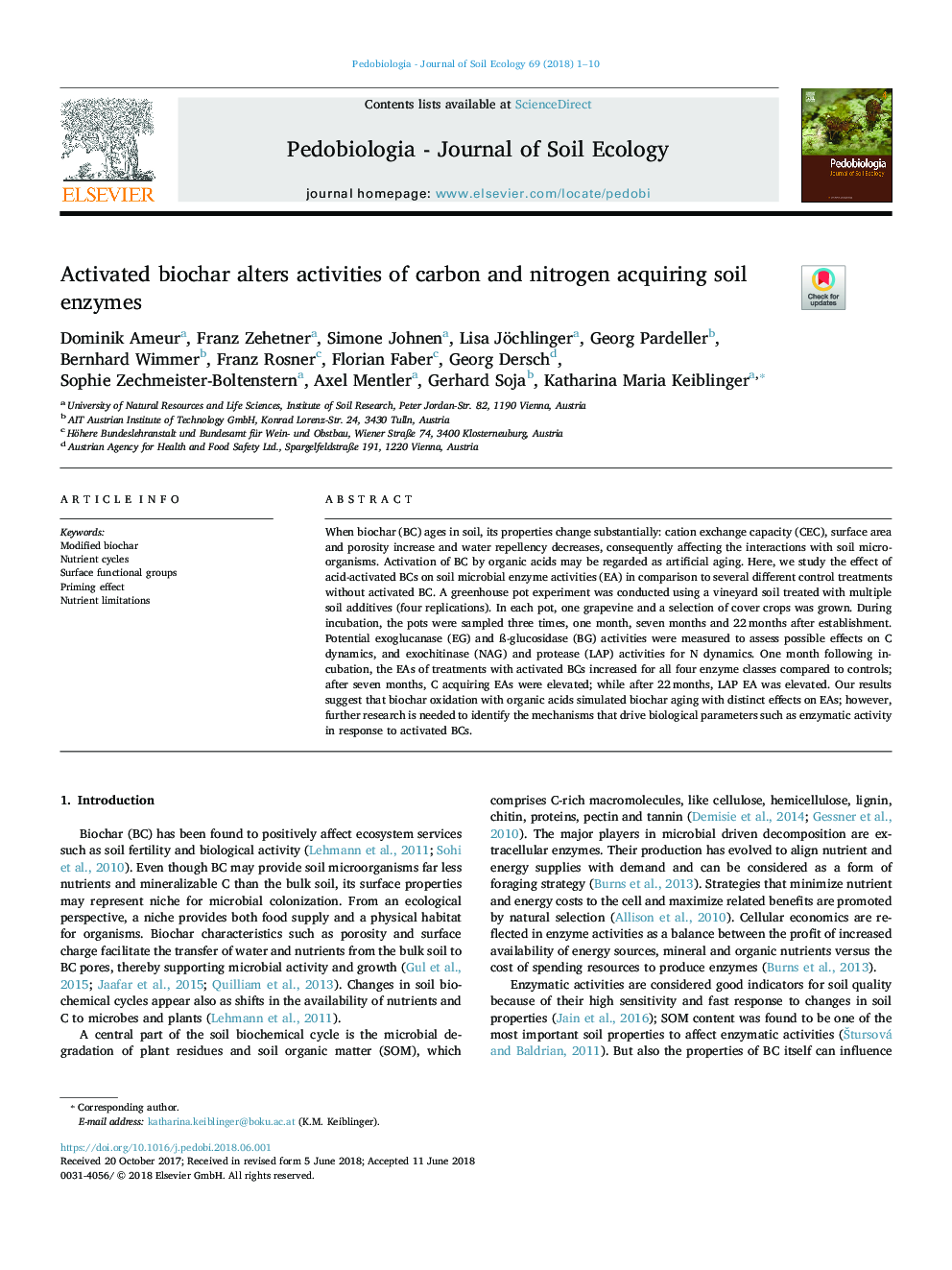| Article ID | Journal | Published Year | Pages | File Type |
|---|---|---|---|---|
| 8392329 | Pedobiologia | 2018 | 10 Pages |
Abstract
When biochar (BC) ages in soil, its properties change substantially: cation exchange capacity (CEC), surface area and porosity increase and water repellency decreases, consequently affecting the interactions with soil microorganisms. Activation of BC by organic acids may be regarded as artificial aging. Here, we study the effect of acid-activated BCs on soil microbial enzyme activities (EA) in comparison to several different control treatments without activated BC. A greenhouse pot experiment was conducted using a vineyard soil treated with multiple soil additives (four replications). In each pot, one grapevine and a selection of cover crops was grown. During incubation, the pots were sampled three times, one month, seven months and 22â¯months after establishment. Potential exoglucanase (EG) and Ã-glucosidase (BG) activities were measured to assess possible effects on C dynamics, and exochitinase (NAG) and protease (LAP) activities for N dynamics. One month following incubation, the EAs of treatments with activated BCs increased for all four enzyme classes compared to controls; after seven months, C acquiring EAs were elevated; while after 22â¯months, LAP EA was elevated. Our results suggest that biochar oxidation with organic acids simulated biochar aging with distinct effects on EAs; however, further research is needed to identify the mechanisms that drive biological parameters such as enzymatic activity in response to activated BCs.
Related Topics
Life Sciences
Agricultural and Biological Sciences
Animal Science and Zoology
Authors
Dominik Ameur, Franz Zehetner, Simone Johnen, Lisa Jöchlinger, Georg Pardeller, Bernhard Wimmer, Franz Rosner, Florian Faber, Georg Dersch, Sophie Zechmeister-Boltenstern, Axel Mentler, Gerhard Soja, Katharina Maria Keiblinger,
